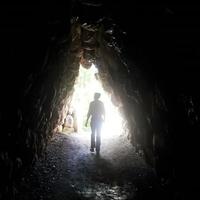Madeline Ouimet
University of Chicago, Near Eastern Languages and Civilizations, Graduate Student
- Near Eastern Languages and Civilizations, Assyriology, Mesopotamian Omens, Mesopotamian Archaeology, Zooarchaeology, Sensory archaeology, and 10 moreSumerology, Geo-spatial analysis with GIS and GPS, Mesopotamian art and visual culture, Mesopotamian Law, Magic and Divination in the Ancient World, Gender, Class and Ethnicity, Agency (Archaeological Theory), Early State Formation, Pre and Proto-History, and Late Chalcolithic, Uruk expansionedit
Jarring signs throughout the enigmatic Akkadian omen series Šumma Ālu create ruptures from the mundanities of first-millennium Mesopotamian life and the urban landscapes it describes. Throughout one hundred and seven tablets, omens with... more
Jarring signs throughout the enigmatic Akkadian omen series Šumma Ālu create ruptures from the mundanities of first-millennium Mesopotamian life and the urban landscapes it describes. Throughout one hundred and seven tablets, omens with explicit “observers” are juxtaposed with those in which the portent is merely present. By contrast and proximity, at least some of these omens thus adopt the implication of being unobserved. The apparent paradox of a sign which lies simultaneously beyond the ambit of observability and yet also within the interests and concerns of the omen system poses questions regarding the role of sensory perception as a process and of the observer as an agent in the formation of ominous meaning. Omens in daily practice could only have dealt with observed phenomena or conditions. Why, then, would the solely theoretical category of unobserved signs exist in the compendia, an encyclopedic text to inform practice? I offer that the distribution of unobserved signs throughout Šumma Ālu asserts the emic existence of an external and therefore objective reality – objective in Mesopotamian terms – at the fundament of the omen system, independent not only of the observer’s mechanical liabilities and limits but also his doubts. Observed omens then integrate this certain systemic basis with uncertain human action and thought, generating new meaning but meaning which can be doubted. Although paradoxical, this consciously constructed coexistence yet distinction between uncertainty localized in the observer and certainty grounded in the system is what allows incongruities between predicted and real outcomes to accumulate without undermining the perceived value of divination. Incongruities do, however, perpetuate doubt of the self, but even the observer’s self-doubt is unexpectedly productive, maintaining the very anxiety which fuels appeal and need for augury and its textual elaboration.
Research Interests:
Turn back time over five thousand years. It’s 3200 BCE—in Mesopotamia, a stylus inscribes the first written words in world history. This region, today’s Iraq, produced clay tablets inscribed with cuneiform writing for the next three... more
Turn back time over five thousand years. It’s 3200 BCE—in Mesopotamia, a stylus inscribes the first written words in world history. This region, today’s Iraq, produced clay tablets inscribed with cuneiform writing for the next three thousand years, from astronomical and medical treatises to literature like the Epic of Gilgamesh. UChicago’s Oriental Institute (OI) Tablet Collection houses thousands of these artifacts. However, a roadblock plaguing cuneiform studies is publication. Many tablets lack high-quality photographs, limiting their utility for scholarship, whether from digs centuries past like the school exercises of Nippur or recently excavated from the OI’s renewed expedition to the site. My research strives to answer how to most effectively visually convey the copious epigraphic and artifactual data in the Tablet Collection to a global network of scholars and general public. To this end, I develop digital preservation methods for tablets via scanning and photography. This year, my research team added to our methodological repertoire HDR (High Dynamic Range) photography and RTI (Reflectance Transformation Imaging) / PTM (Polynomial Texture Mapping) which allows the viewer to manipulate light sources. I use multiple photo-editing applications to create a composite image simultaneously displaying all faces of a tablet and enhancing visibility of material characteristics. I upload these images to the open source Integrated Database, research each tablet’s historical background, and aid in transliteration and translation of Akkadian and Sumerian textual content. This allows comprehensive presentation of not only text in the abstract but its materiality—form, composition, surface treatment, impressions, color, script and handwriting, organization, state of preservation, and therefore data reliability. Each unique object requires its own methodology for effective presentation. These physical aspects of the text can only be conveyed through photography and must be conveyed if we are to understand the active relationship between written word and material medium.
